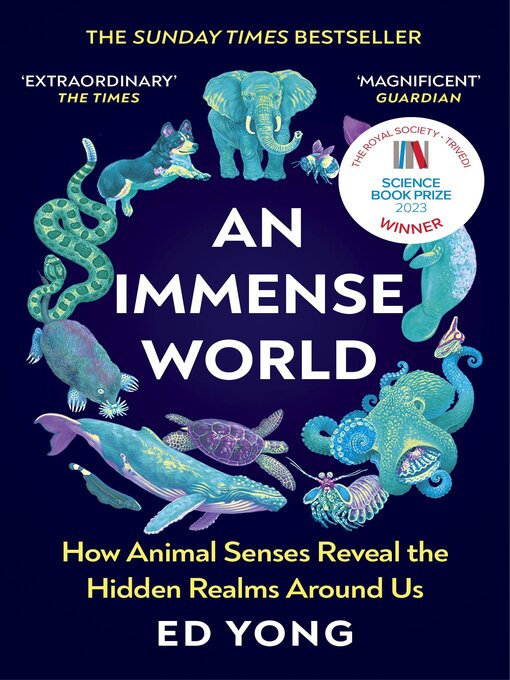** WINNER OF THE 2023 ROYAL SOCIETY TRIVEDI SCIENCE BOOK PRIZE ** AN INSTANT SUNDAY TIMES AND NEW YORK TIMES BESTSELLER **
This is our world, as you've never seen it before.
'Immersive and mind-blowing' Peter Wohlleben, author of The Hidden Life of Trees
The Earth teems with sights and textures, sounds and vibrations, smells and tastes, electric and magnetic fields. But every animal is enclosed within its own unique sensory bubble, perceiving only a tiny sliver of this world.
In An Immense World, Ed Yong coaxes us beyond the confines of our own senses, welcoming us into previously unfathomable dimensions - the world as it is truly perceived by other animals. Showing us that in order to understand our world we don't need to travel to other places; we need to see through other eyes.
A NEW YORK TIMES, GUARDIAN, ECONOMIST, SPECTATOR, TIMES LITERARY SUPPLEMENT and NEW STATESMAN BOOK OF THE YEAR
**Winner of 2023 Carnegie Medal for Excellence in Nonfiction**
'Suffused with magic' Siddhartha Mukherjee, author of The Song of the Cell
'A book that prompts awe at the world around us' Sunday Times
Sunday Times bestseller, July 2023
- 2025 UK Summer Reading Challenge
- British Science Fiction Association awards
- Book of the Year
- International Booker Prize
- 2025 Women's Prize for Nonfiction
- The Arthur C. Clarke Award
- Uplifting Reads to Kickstart Your Year
- Bestsellers of 2024
- Nero Book Awards
- Great Reads from Around the World
- THE POLARI PRIZE
- World Poetry Day
- International Women's Day
- See all ebooks collections
- World Cancer Day
- International Day of Women and Girls in Science
- Magazines
- World Photography Day
- See all magazines collections



